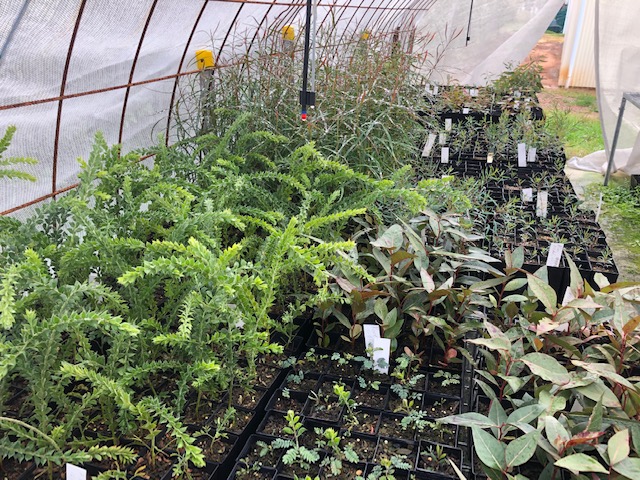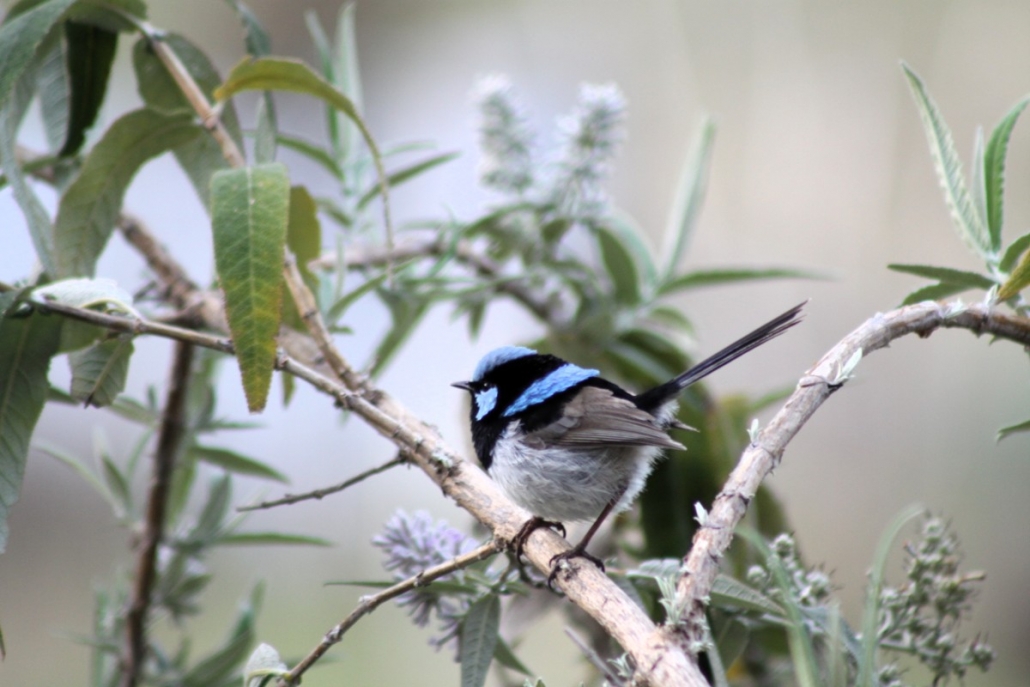Adaptive Planned Grazing, key to creating more drought resilient farms
/in Community, Projects /by maddisonMudgee Microscope Group on a mission to educate locals on landscape
/in Community, General, News /by maddisonFor this week’s catchment corner, we’re shining the spotlight on one of our special interest community groups. The Mudgee Microscope Group!
Born out of a soil health workshop in 2014, the group formed with the aim to look a little closer at our precious landscape and to learn about new ideas, practices and places that are important for living an environmentally conscious life.
Don’t let the ‘microscope’ deter you! This is far from a hardcore science program, our goal is to learn practical skills to improve our land, gardens and lifestyles, to be more sustainable and resilient.
A social group at heart, it is a joy to meet once a month to chat and catch up, taking walks in nature, enjoying morning tea or evening drinks together and sharing in the learning journey. It’s a wonderful platform for our members to share their own knowledge and skills so we all end up going home after every meeting with a head full of new, bright ideas & perspectives.

At our latest meeting, we visited the Wollar cemetery which is home to a collection of native grasses, shrubs and herbs that are nowadays hard to find in the surrounding rural landscape. Cemeteries in the area, with soils that have been left undisturbed by cultivation since settlement, now act as important reserves for native biodiversity that is disappearing. The workshop was led by local botanist Christine McRae, we took a walk and found some of these rare native gems and learned some identification skills before enjoying the Autumn sunshine with a picnic and a cuppa!
The focus topics are chosen by our members based on what’s interesting and important to them. From its origins in soil health, the Microscope Group has evolved to cover a huge range of fascinating topics in the form of workshops and field trips. From Frog identification, earth building and seed collection to farm visits, permaculture and book clubs. We occasionally host expert guest speakers and have additional opportunities to attend different types of events outside the group.
There’s something for everyone and we think more local people would get a lot out of these monthly gatherings. We’d love to see you at our next meeting. It’s a great way to meet new people and get the creative juices flowing. Just get in touch with your local coordinator and we’ll keep you in the loop!
Native Tubestock for Sale
/in Community, General, News /by wslcLooking for plants that are grown locally?
Our Landcare Nursery volunteers, Christine, Wendy & David have been nurturing seedlings over the past 9 months.
There are a range of species but numbers are limited. If you’re not sure about what species to plant where, take a look at our planting guide.

Native plants grown with love & care, ready for a good home!
Perhaps your garden, gully or paddock?
Some plants are ready for planting now (N), others will be ready for spring planting (S) eg Acacia decora Western Silver Wattle ( 0-N, 29-S).
Contact Claudia if you would like to make a purchase.
Please email with your quantities and we will advise if they are still available. Payment is required to confirm order and before pick up can be arranged.
All plants $3.00
Financial members discount price $2.50 (what a good reason to renew your membership!)
| Species | Common name (quantity/planting time) |
| Eucalyptus blakelyi Eucalyptus camaldulensis Eucalyptus crebra Eucalyptus viminalis |
Blakely’s Red Gum (13/S) River Red Gum (27/N) Narrow-leaved Red Ironbark (18/N) Manna Gum (60/S) |
N: ready to plant now
S: plant in spring
Have you seen a blue Superb Fairy-wren lately?
/in Community, General, News /by wslcThe Superb Fairy-wren is one of Australia’s most recognisable and favourite birds. And who doesn’t enjoy watching the antics of these charismatic, active and social backyard visitors? But did you know that the males undergo a seasonal colour change?
The striking iridescent blue with highly contrasting black and grey markings of the male Superb Fairy-wren is instantly recognisable. But the males only adopt this colouring for the duration of the breeding season in the warmer months. There is a good evolutionary reason for moulting twice a year, instead of once a year like most other birds.

While these little birds are socially monagamous, they are sexually promiscuous. They live in family groups and the dominant male and female form a stable pair to raise young, but both partners will mate with many individuals from other groups. So males adopt showy, noticeable colouring to attract as many females from nearby groups as possible.
As the breeding season ends and we move into winter, the breeding males revert to the duller, grey-brown colour of females, juveniles and non-breeding males. During this time insects become less abundant and the birds need to spend the majority of their time in the open foraging.
Being extremely attractive to the ladies has its cost. Fairy-wrens are vulnerable to predation from larger native birds such as Magpies, Kookaburras and Currawongs as well as introduced mammals like the fox and cat. Although brilliant blue feathers may be extremely attractive to females, it also makes the breeding males highly conspicuous to predators.
And the birds seem to be aware of this too. A study conducted by Monash University and Australian National University found that plumage colour changed behaviour.
The researchers played low-level and high-level alarm calls to the birds through portable speakers. Birds were fitted with coloured leg bands allowing the team to track individual birds’ responses.
The team found that males in their blue plumage were much more cautions than in their brown plumage. They reacted to low-level alarm calls more readily and took a longer time to come out from shelter.
The behaviour of other birds in the group was also affected. When a blue male was nearby, other wrens were less responsive to alarm calls and devoted less time to keeping a look-out.
The results suggest that the seasonal colour change is an adaptation that allows the birds to have the best of both worlds: they can be sexually attractive and bright while breeding, but also dull coloured and difficult to detect by predators outside the breeding season.
Buy local this Mother’s day
/in Community, General /by wslcIf drought and bushfires weren’t enough COVID-19 and the associated restrictions have certainly made operating a small business difficult.
Social distancing has meant many businesses have had to significantly modify their operations. The hospitality and tourism sectors have been heavily impacted by having to reduce their hours or even close their doors completely for the foreseeable future. Additionally, may farmers and producers without a shopfront have had to contend with the cancellation of markets and events.
Many are adapting by offering online sales and deliveries or even diversifying the products or services they offer. With Mother’s day just over a week away, you can do your bit by supporting a local business when shopping for a gift this year.
Many big businesses now routinely use social media in their marketing campaigns, but trending hashtags, such as #buylocal and #buyfromthebush, have shown that consumers want to support local communities.
The #buyfromthebush campaign was started in 2019 to encourage city consumers to support drought stricken farmers and small rural businesses. In social media terms it was a huge success, attracting 130,000 followers in 7 weeks and boosting rural postage figures by 40%. And for good reason. Every dollar spent in the local community makes a difference, particularly in rural and regional areas.
Supporting small local businesses and self-employed people has a positive impact on the local economy and creates local jobs. Buying goods or services from local farmers, producers, designers and tradespeople puts money in their pockets and this has a ripple effect. As local businesses prosper and grow they provide more employment, more money circulates in the local economy and, in turn, they can provide you with more products and more choice.
Many items in today’s marketplace often travel half way around the world before they reach us. So buying locally grown and made items not only reduces the carbon footprint but when it comes to food, provides a more seasonal and nutritious option.
While the internet makes it possible to buy goods from anywhere in the world, due to the volume required these are generally one-size-fits all, generic items. Locally grown or locally made products from locally owned businesses provide a more unique and personal option, often with a story behind it. And when it comes to a gift what is more appreciated?
Even without the new, added challenges, many rural communities and businesses are struggling to compete with chain stores, multinationals and internet shopping. By keeping your money local this Mother’s day you can help to make Mudgee and it’s surrounding towns and villages more viable and sustainable.
Environmental health through community
/in Community, News /by wslcLocal landcare group, Watershed Landcare, remains focused on promoting and facilitating environmental sustainability and natural resource management in our region. Our mission: to engage, empower and support our community to achieve a resilient and sustainable environment within the Watershed Landcare district.
And that’s no mean feat in a region of diverse land use and community interests with a footprint of 900,000 ha!
Sustainable agriculture and care for our natural environment are key priority areas. We work with our members and the community to improve knowledge and awareness, and to increase the uptake of sustainable land management practices.
We strive to promote practices that protect and enhance biodiversity, including threatened species and endangered ecological communities, while bringing innovation and sustainability into agricultural production; that means getting people to do business in a sustainable and viable fashion and fostering value in their natural assets.
To encourage the uptake of innovative practices we provide training in the latest agricultural and land management practices and techniques, focusing on a diverse range of topics such as grazing management, building soil carbon and health, plant identification and management of invasive species.
In the last year we have supported our members to conduct projects to protect and enhance native vegetation on their land by establishing paddock trees and corridors; providing not only habitat linkages but also contributing multiple benefits to productive systems. Our Sustainable Soil Management workshops provided participants with subsidised soil tests, resources, guidance and training to enable them to make their own decisions on soil management and building fertility.
Late last year we ran a series of events to refresh and reinvigorate our community in the midst of drought. We hosted workshops on the use social media for small business as well as a Rural Refresh evening with an inspirational panel of speakers.
Our special interest groups remain a high priority and we have supported the Grazing Group, Mudgee Microscope Group, Women in Ag Group, Mudgee Bee Group and the Friends of Putta Bucca to explore topics of interest and provide a peer support network and an active forum for discussion for their members.
Current COVID-19 restrictions have meant that a number of our activities have been put on hold, or even cancelled. But our Committee remains active and our Coordinators are still working from home to support and engage our community.
Want to find out more about what we do or how to get involved or just need a chat? Contact one of our Coordinators, Claudia Wythes on 0412 011 064 or Agness Knapik on 0435 055 493 or email: info@watershedlandcare.com.au.
Do you have a great idea for a project, speaker or topic we should explore? Let us know, we’re always on the look out for fresh ideas.
